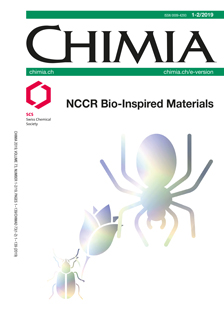Functional Polymers Through Mechanochemistry
DOI:
https://doi.org/10.2533/chimia.2019.7PMID:
30813988Keywords:
Mechanochromic, Mechanophore, Mechanoresponsive, Polymer, Stimuli-responsive polymersAbstract
While coupling mechanical and chemical processes is widespread in living organisms, the idea to harness the mechanically induced dissociation of weak covalent and non-covalent bonds to create artificial materials that respond to mechanical stimulation has only recently gained attention. Here we summarize our activities that mainly revolve around the exploitation of non-covalent interactions in (supramolecular) polymeric materials with the goal to translate mechanical stresses into useful, pre-defined events. Focusing on mechano- chromic polymers that alter their optical absorption or fluorescence properties, several new operating principles, mechanosensitive entities, and materials systems were developed. Such materials are expected to be useful for technical applications that range from the detection of very small forces in biological systems to the monitoring of degradation processes and damage in coatings and structural objects.
Downloads
Published
Issue
Section
License
Copyright (c) 2019 Swiss Chemical Society

This work is licensed under a Creative Commons Attribution-NonCommercial 4.0 International License.







